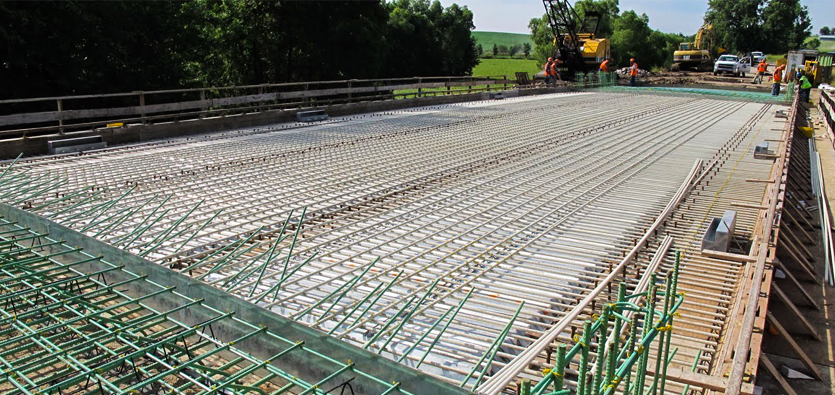Composites: The Future of Sustainable Building And Construction Materials
Composites: The Future of Sustainable Building And Construction Materials
Blog Article
Unlocking the Environmental Advantages of Recycled Composites in Construction and Style
In the realm of building and layout, the utilization of recycled compounds holds substantial assurance for enhancing sustainability methods and reducing environmental effect. The shift towards a much more lasting future in these markets pivots on opening the complete possibility of recycled compounds.

Environmental Impact Decrease
The reduction of environmental impact through making use of recycled composites in construction and design plays an important role in lasting techniques. By integrating recycled composites into building products, the building industry can considerably decrease its carbon impact and add to a much more environment-friendly future. These lasting materials, made from repurposed plastics, wood fibers, or various other recycled aspects, offer a sensible option to conventional building and construction products without compromising on top quality or longevity.
Recycled compounds help draw away waste from landfills and lower the requirement for drawing out raw materials, hence conserving all-natural resources. In addition, the manufacturing procedure of these compounds commonly consumes much less energy and sends out fewer greenhouse gases contrasted to producing virgin products (composites). This shift towards using recycled composites not just lessens environmental injury however also promotes a round economic situation by motivating the reuse of products that would or else be discarded
Waste Minimization
With a focus on decreasing waste in building and style, the assimilation of recycled composites supplies a sustainable option to lower environmental effect. Waste minimization is a crucial element of lasting practices, and using recycled compounds offers a chance to attain this goal effectively. By using materials that have actually currently offered their initial function, such as recycled plastics or recovered timber fibers, the building and layout industries can substantially lower the quantity of waste generated and sent to land fills.
Recycled composites have the potential to divert substantial amounts of waste from standard disposal approaches, contributing to a more circular economic climate where resources are utilized efficiently. Additionally, the manufacturing process of recycled composites commonly eats much less energy and generates less discharges compared to virgin materials, even more minimizing the ecological impact of building and design projects.
Implementing waste minimization approaches via the unification of recycled compounds not only helps in saving natural deposits however also advertises an extra lasting technique to building and designing for a greener future.
Energy Conservation
Incorporating recycled compounds not just reduces waste in construction and style however additionally plays a vital function in enhancing energy preservation methods within the sector. The usage of recycled compounds in building can considerably contribute to power conservation via different means. The production of virgin materials typically calls for considerable power inputs, whereas making use of recycled composites eats much less power, consequently decreasing total power intake. In addition, including recycled compounds can add to much better insulation buildings in buildings, minimizing the need for extreme home heating or air conditioning, and subsequently decreasing power use for environment control. The light-weight nature of several recycled composites can lead to lighter structures, needing much less power for transport and installation. By promoting making use of recycled composites in building and layout, the sector can make significant strides towards accomplishing power efficiency and minimizing its carbon impact, inevitably contributing to a more sustainable developed setting.
Carbon Footprint Decrease
Enhancing sustainability techniques with the use of recycled compounds in construction and layout dramatically minimizes the carbon footprint of the industry. By including recycled products right into the production of compounds, the demand for virgin resources decreases, leading to lower energy intake and greenhouse gas exhausts connected with standard manufacturing processes. This decrease in carbon footprint is read review crucial in combating environment change and promoting an extra ecologically friendly approach to building and construction and style.
The carbon footprint decrease attained through the adoption of recycled composites aligns with the worldwide push in the direction of sustainable methods and the reduction of industrial exhausts. Inevitably, by prioritizing the assimilation of recycled composites, the industry can make considerable strides in decreasing its carbon impact and adding to a more sustainable future.
Sustainable Future
The integration of recycled compounds in building and design not just addresses prompt ecological concerns yet likewise lays a strong foundation for a lasting future in the industry. By including recycled composites right into structure materials and items, the construction and style industries can significantly minimize their reliance on virgin resources, leading to an extra circular economic situation. This shift in the direction of sustainability is important for mitigating the environmental impact of typical building methods, which often cause high levels of waste generation and source deficiency.

Conclusion
To conclude, recycled compounds use substantial ecological advantages in construction and design by minimizing environmental effect, reducing waste, preserving power, lowering carbon impact, and advertising a sustainable future. Accepting making use of recycled composites can contribute to a more environmentally-friendly approach to building and design, ultimately leading to a more lasting and greener future for all.
The decrease of environmental impact through the usage of recycled compounds in construction and layout plays an essential role in sustainable techniques.With an emphasis on reducing waste in construction and layout, the assimilation of recycled compounds offers a lasting option to decrease environmental impact. By promoting the usage of recycled compounds in building and design, the industry can make substantial strides in the direction of accomplishing power effectiveness and lowering its carbon footprint, ultimately adding to a much more sustainable constructed atmosphere.

Report this page